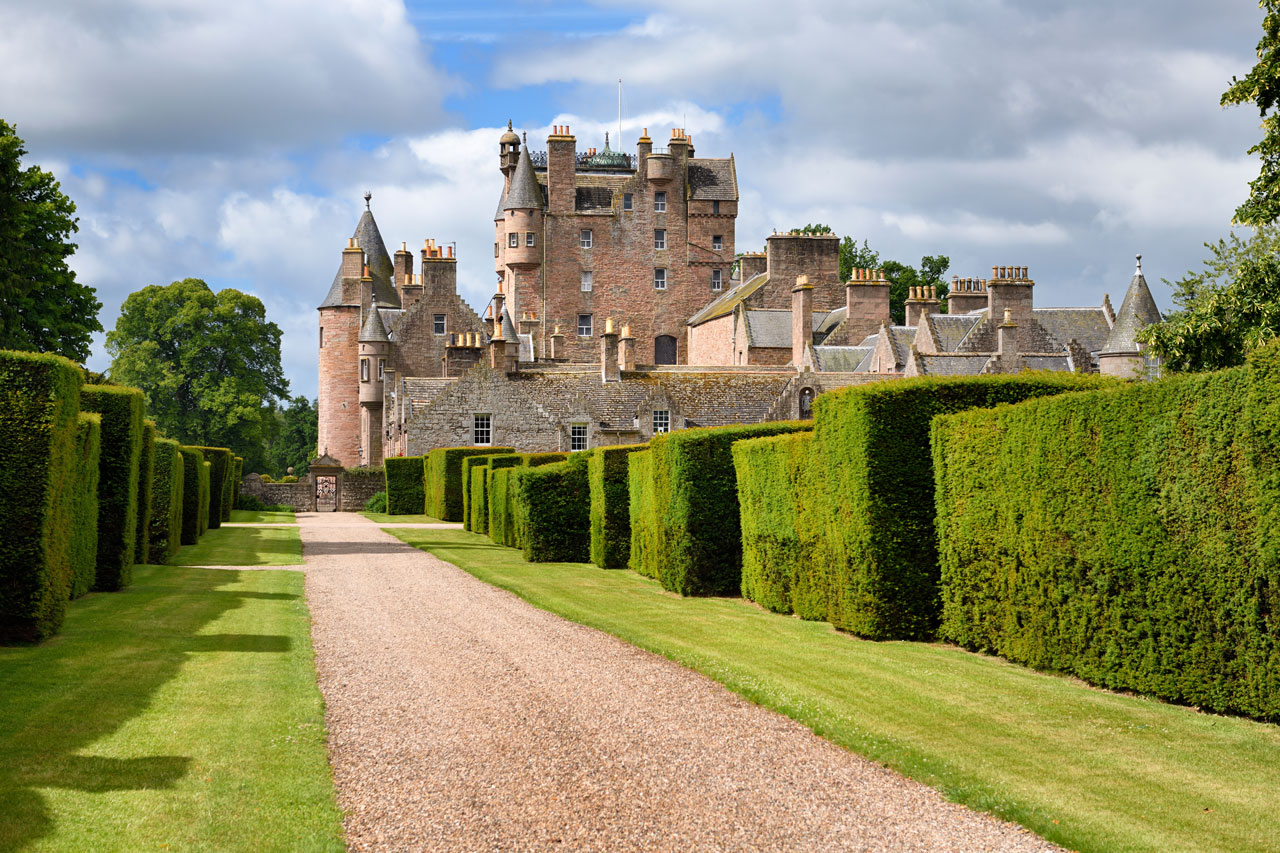- Home
- Scottish Castles
- Glamis Castle
Visit Glamis Castle

A brief history
Today Glamis Castle is best known for its association with the Royal Family. The castle was the childhood home of Queen Elizabeth, the Queen Mother, and the birthplace of Princess Margaret, Countess of Snowdon, born in 1930.
The history of Glamis Castle dates back to the 11th century when the site was used as a hunting lodge for the Scottish kings. The first castle was built around 1372 when King Robert of Scotland granted the lands to Sir Robert Lyon as a wedding gesture for his marriage to Joanna, the king's daughter. There are a few remnants left from this period like the Old Kitchen, Duncan's Hall and the Crypt.
Glamis in its present form was built in the 17th century when Patrick Lyon, the Earl of Strathmore, remodelled his family home in the style of a French chateau and the work was to continue for many years. Italian craftsmen worked on the magnificent plaster work on the ceiling of the new drawing room, a panelled chapel and a new west wing was added and the central tower was raised.
Many kings and queens have stayed at Glamis Castle including Mary, Queen of Scots. James V lived there for four years after he had seized Lady Janet Douglas, widow of the Earl of Glamis, in 1540. The unfortunate Lady Janet was charged of witchcraft and burnt at the stake. Twenty years later an inquiry had found the charges of witchcraft against Lady Janet false and the castle was restored to the Lyon family.
The castle itself contains innumerable secret passages and eerie tales are told of the ghosts who wander through the rooms and chambers. One legend of a hideously deformed creature has persisted, born to an earlier countess of Glamis and then locked away for many years. The screams of his ghost are still to be heard ringing through the castle at night.
Glamis Castle is currently the home of Simon Bowes-Lyon, 19th Earl of Strathmore and Kinghome.
HIGHLIGHTS OF GLAMIS CASTLE
THE INTERIOR
The inside of the castle with its many bedrooms, dining room and crypt is magnificent and packed with paintings, antiques and family heirlooms. The Great Staircase, built in 1605, is 143 stone steps long and winds its way from the basement to the battlements.
NOT TO BE MISSED
- The Dining room
- The Crypt
- The Drawing Room
- The Royal Apartments
- The Glamis Gallery
THE GARDENS AND GROUNDS
The Gardens were first established by Patrick, 3rd Earl of Strathmore and Kinghorne, in around the second half of the 1600s. In the 1760's the 9th Earl of Strathmore created a large landscaped park which was very much in fashion at that time.
From around 1870 the landscape began to take shape when Claude, the 13th Earl, started to plant large numbers of trees including large conifers which have added so much to the character of the grounds
and castle.
THE WALLED GARDEN
In 2015 the 18th Earl and the Countess of Strathmore and Kinghorne realised that the Walled Garden had fallen into disuse and started a major redevelopment. A large central fountain and a Monet style bridge over an ornamental pond were added and new flower beds were being planted. You can also expect to see fruits and vegetables being grown by the Castles Garden Team.
THE ITALIAN GARDEN
This spectacular Garden was laid out by Countess Cecilia, wife of the 14th Earl and mother to HM Queen Elizabeth the Queen Mother in around 1910 with assistance from garden designer Arthur Castings. It is accessed through ornamental gates installed to celebrate the Queen Mother's 80th birthday in 1980.
Yew hedges surround the garden and a raised viewing terrace running along the southern side between two gazebos offer unusual views of Glamis Castle. More incredible yew hedges at the north east corner
of the Italina Garden lead to a beautiful memorial to HRH The Princess Margaret, who was born at Glamis Castle.
Location
Glamis Castle
Forfar DD8 1RJ
Official website: Glamis Castle

